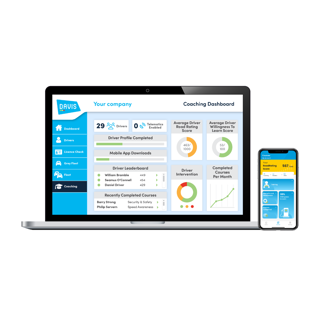The fleet industry is counting the cost after hundreds of vehicles were damaged in the UK’s recent floods.
Flood-related claims for fleet vehicles over the winter period have increased by 250% compared to last year, says accident management company FMG.
With an estimated cost of £4,500 per incident, FMG suggests that the floods have caused approximately £2.5 million of damage to fleets.
Matthew Dyer, commercial director at LeasePlan UK, said: “Organisations will undoubtedly suffer from these unexpected costs, especially since many fleets have only third-party fire and theft cover in place, which makes the financial implications even more worrying.”
The Met Office says the UK suffered the wettest winter since national records began in 1910, while separate records held for England and Wales also show the heaviest rainfall since they were started in 1766.
Provisional figures show 517.6mm of rain fell in the UK between December 1 and February 24, which compares with an average winter rainfall of 330.4mm between 1981 and 2010.
Regional records have also been beaten, with the flood-hit south east of England getting well over double the rainfall expected in a normal winter.
Nick Kitchen, head of motor and casualty at Zurich’s commercial broker business, told Fleet News: “It’s still early days in terms of assessing the full impact the recent flooding and intense weather have had on our customers’ fleets.
“But we have seen an increase in damage claims come through for vehicles which have either been left in areas impacted by flooding or where drivers have misjudged the depth of flooded roads and have attempted to drive through.”
A third (35.7%) of respondents to a Fleet News poll said one or more of their vehicles had been damaged as a result of the floods.
Kitchen added: “It takes only a small amount of water to get into the engine’s air intake to wreck the entire engine so we’ve been advising our customers to remember to include their fleets as part of their business continuity plans and health and safety policy.
“The primary focus will always be on buildings and property resilience against flooding, but firms should also consider ways to keep their fleets safe from flood waters and provide guidance to drivers in the event they encounter flooded roads.
“It sounds straightforward, but it’s very easy to forget when you’re concerned about the rest of your business and its ongoing productivity.”
The AA has attended 4,382 flood-stricken vehicles since the beginning of December. Its ‘storm-chasing’ team, which receives specialist flood rescue and 4x4 training and is equipped with modified Land Rovers, has been supporting the AA’s regular patrol force.
The RAC deployed its SOS 4x4 team to the worst-hit areas and told Fleet News the roadside recovery service had attended 553 ‘ditched or bogged’ fleet vehicles since the beginning of the year.
RAC spokesman Simon Williams said: “This has not been the greatest start to the new year with many fleets across the country being brought to a standstill because of the dreadful weather.”
However, one fleet that hasn’t been at a standstill is the Environment Agency, which operates 4,800 cars and vans. Its teams have been working round the clock to help protect homes, businesses and communities.
Kier mobilised teams of employees to fill and distribute sandbags in local communuties to protect homes and businesses from rising water levels.
The construction company, which operates a fleet of 4,500 vehicles, donated more than 32,000 sandbags and more than 1,300 tonnes of sand to flood-stricken communities in Somerset, Surrey, Aylesbury and the Thames Valley.
As the waters begin to recede, the sheer scale of the damage has prompted appeals for clearer driving advice in adverse weather.
Dyer said: “Driver training and effective preparation would help to mitigate the impact on fleets and subsequently the people and businesses that rely on them.”
As for driving through flood water, Kitchen added: “If you’re in any doubt about the depth or your vehicle’s ability to navigate the water, then don’t drive through it.”























Bianca Castafiore - 10/03/2014 11:27
Interesting to read that so many fleets are insured for third party, fire & theft rather than fully comprehensive. With the cost difference to the average motorist so little these days, is there a reason for fleets to insure at a lower level? I can only assume from reading the report that fleets must calculate the average number of claims and compare the cost of the claims that with the cost difference between going TPFT and fully comprehensive.